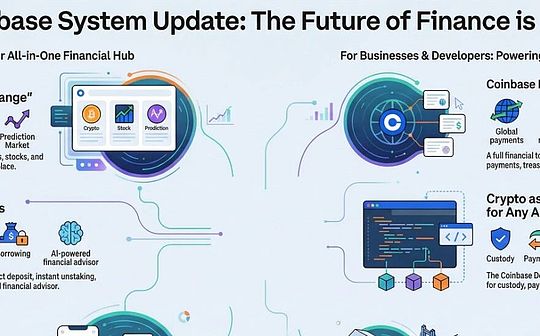
Following a proposal designed to limit the rapid expansion of Staking Pool, the current Ethereum community is discussing another measure on changing ETH policies, which is promoted by the surge in demand for liquidity pledge and re -pledges.
summary
-
Following the proposal to reduce ETH’s circulation rate, the Ethereum community is currently in a fierce debate on more ETH policies.
-
Innovation in pledge methods such as liquidity pledge, heavy pledge, and liquidity pledge pledge brought additional income opportunities to investors. There is no doubt that it significantly boosted the pledge needs in the market.
-
However, another potential impact that has to be attracted to pay attention is that people may worry that the increasing prevalence of pledged derivatives may weaken Ethereum itself as the function of encrypted assets, causing changes in the governance power of the Ethereum network.
Last weekend, the geographical tension in the Middle East was still increasing.Given that encrypted assets are the only assets that have traded on weekends, their affected influence immediately -last weekend, the crypto asset market immediately declined significantly.The price of BTC fell by 8%, and the price of ETH fell 13%.Although the market stabilized and slightly recovered after this wave of decline, then continued to fall on the sideways.After this incident, investors may be cautious about the long -term impact of the encrypted asset market.
>
In the Ethereum ecosystem, the issue of potential changes in its circulation rate has always been controversial.The discussion this time was caused by two Ethereum researchers to slow down ETH’s distribution and thereby reducing the proposal of pledge rewards.The overall goal of this proposal is to suppress the rapid growth of Staking Pool at this stage to better manage new pledge methods such as liquidity pledge and heavy pledge and to establish their growing dominant position, and protect Ethereum as crypto assets as encrypted assets.Function.
The demand for pledge on Ethereum is unexpectedly high. At present, the total assets that actively participate in the Ethereum equity certificate are 31.4 million ETH (about 26%of the total supply).In addition, we can also see that the growth rate of ETH pledged in recent months is still accelerating -especially in the EIGENLAYER heavy pledge agreement in June 2023 and the new pledge agreement of the liquidity pledge agreement in early 2024,After launch.
>
Differential incentive mechanism
Initially, the design concept of equity certificate was that with the increase of ETH of the mortgage, the marginal income of each verifier would decline.Therefore, this mechanism can realize the self -regulation of the size of Staking Pool. At present, the Staking Pool of the Communist Party of China has pledged 31.4 million ETH, and the annual interest rate of each verification person is expected to be about 3.2%.
>
However, new development of maximum extraction value (MEV), liquidity pledge, heavy pledge, and liquidity heavy pledge brings more profitable opportunities.Therefore, the incentives and demand of user pledge is increasing, and this demand has now exceeded the vision of the initial design rights certificate.
If we classify the Ethereum assets participating in the pledge in accordance with different pledge agreements, we will find that since the beginning of this year, the ETH pledged by liquidity pledge provider has increased significantly, and the pledge in this agreement has now accounted for now.The total amount of ETH of the new pledge is 27%, and the new pledge of the liquid pledged provider has been decreasing since mid -March.
>
The concept of heavy pledge was introduced by the EIGENLAYER protocol last year.Under the EIGENLAYER protocol, users can deposit ETH or mobile pledged assets they pledged into Eigenlayer smart contracts, and then these assets can be used by other protocols (such as RolLUP, Oracle, and Bridges) as security pledge assets.In addition to the native pledge income obtained from the Ethereum main chain, the pledges under the pledge agreement can also earn additional costs from these agreements.
Since the launch of the agreement, the pledge assets on the Eigenlayer agreement have surged, and its total value (TVL) has now exceeded 14.2 million ETH (worth about $ 13 billion).Another point we need to notice is that the high demand for pledged investors for heavy pledge also comes from high expectations for Eigenlayer airdrop activities.
Under the EIGENLAYER protocol, more than 61.1%of TVL comes from the native pledge ETH, while the rest consisting of pledged assets in the liquid pledged agreement. Among them, Lido’s STETH is leading, and its volume accounts for 21.5%of the total TVL.
>
Rise of liquidity heavy pledge
The operation method of liquidity heavy pledge is very similar to liquidity pledge. It allows users to re -mortgage their assets and obtain their liquidity of reinventing assets to return.There is no doubt that this seems to be a pledge strategy that Eigenlayer users prefer -at present, 63%of ETH pledge in Eigenlayer is carried out by liquidity pledge providers.
>
At present, researchers at the Ethereum Foundation are concerned about the high -level and continuous pledge rate.Although more ETHs pledge will bring lower economic returns to each verification person, if the total amount of ETH pledged becomes a large amount, the total reward they pay may still lead to inflation.At present, the newly issued Ethereum has accounted for approximately 1.01%of the total supply, which is not a value that can be used to be idle -although it can still be offset by about 3.55%of the supply of assets that can be destroyed during the same period.
>
As more and more ETH enters the Staking Pool, inflation has begun to affect the reduced ETH holder side.In other words, wealth is constantly narrowing ETH holders to the growing pledged ETH holder group.
Over time, the decline in this “actual yield” section may reduce the attractiveness to non -pledged ETH holders, and may also weaken the general equivalent function of ETH as the general equivalent of the Ethereum ecosystem.Affected by this, the role of the function of “general equivalent” may be migrated to the assets under the liquidity pledged agreement or liquidity heavy pledge agreement like STETH, and the original assets were only regarded as an affected Ethereum.Tool for pledge pressure.This development will certainly have some side effects. For example, what we predict that the issuance of these derivative assets will have a huge impact on the governance and stability of the Ethereum execution layer and consensus layer.
Today, we have noticed that half of the pledged ETH is provided through these derivative projects.Among them, the pledged ETH, which accounted for 42%of the pledged assets, re -flow through liquid -pledged derivative assets, while the other 8%of the pledged Ethereum returned to the market through the derivatives of the liquidity heavy pledge.
>
The concerns of Ethereum researchers are also applicable to the general equivalent nature of Ethereum itself.In the total supply of ETH, 11% are derivative assets of liquidity pledge, while 2.2% of the assets come from financial derivatives generated under the liquidity pledge agreement.
>
The proposal proposed by the Ethereum Foundation aims to control the annual circulation of Ethereum, thereby reducing the driving force of the new pledged person to enter the Staking Pool. If this proposal is implemented, it is expected to slow down the growth rate of pledge growth.However, these proposals have been strongly opposed by the community. Many people believe that they should not make any changes at present, and they have also questioned whether they should update the ETH policy again.
During the last DENCUN upgrade, we found that with the upgrade, the growth of Staking Pool has received some minor restrictions -this time the hard fork introduces up to 8 new authentic restrictions every 6.4 minutes and every EPOCH, and use it and use it.It replaces the original loss limit function.It turns out that this effectively limits the number of verifications and the pledge of Ethereum that can enter the Ethereum of Staking Pool, which temporarily relieves some pressure for Ethereum’s ecosystem.
>
Summarize
At present, the Ethereum ecology is discussing whether it is necessary to modify the ETH circulation rate to explore the expansion of Staking Pool to what extent the policy can be slowed down.The ultimate goal of this proposal is to reduce the impact of new things such as liquidity pledge and heavy pledge to the Ethereum ecology, and these innovations were originally aimed at improving the profit opportunities that users obtained.
In the current situation, pledge has surged (currently reached 31.4 million ETH, accounting for about 26%of the total network supply) was driven by heavy pledge agreements such as the EIGENLAYER protocol.These development has led to surge in liquid pledged assets, but in the long run, this may begin to weaken the role of Ethereum as a general equivalent.At present, the Ethereum Foundation recommends restricting annual circulation to slow down the growth rate of Staking Pool, but these proposals have been strongly resisted by the Ethereum community.







